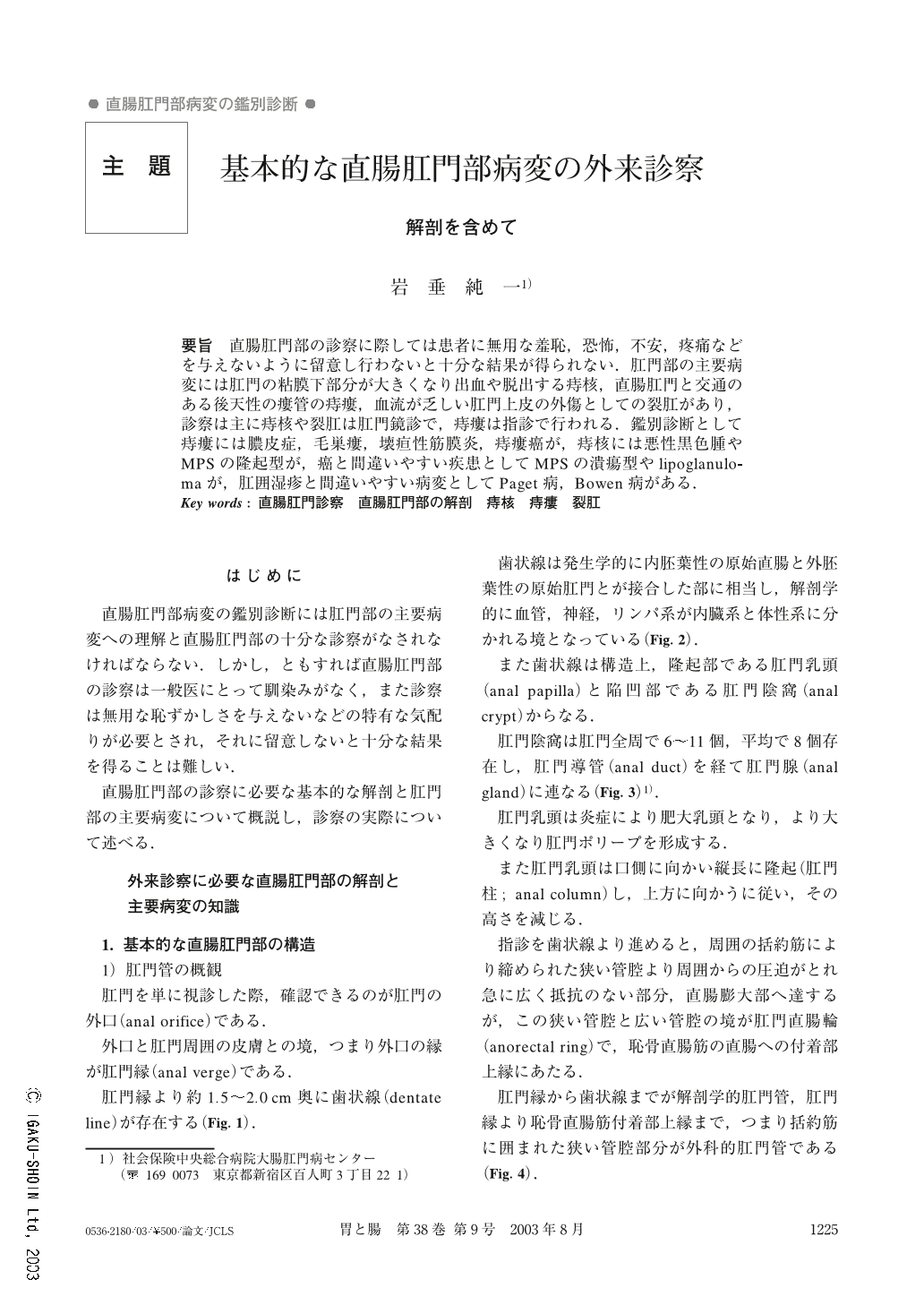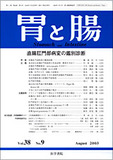Japanese
English
- 有料閲覧
- Abstract 文献概要
- 1ページ目 Look Inside
- 参考文献 Reference
- サイト内被引用 Cited by
要旨 直腸肛門部の診察に際しては患者に無用な羞恥,恐怖,不安,疼痛などを与えないように留意し行わないと十分な結果が得られない.肛門部の主要病変には肛門の粘膜下部分が大きくなり出血や脱出する痔核,直腸肛門と交通のある後天性の瘻管の痔瘻,血流が乏しい肛門上皮の外傷としての裂肛があり,診察は主に痔核や裂肛は肛門鏡診で,痔瘻は指診で行われる.鑑別診断として痔瘻には膿皮症,毛巣瘻,壊疸性筋膜炎,痔瘻癌が,痔核には悪性黒色腫やMPSの隆起型が,癌と間違いやすい疾患としてMPSの潰瘍型やlipoglanulomaが,肛囲湿疹と間違いやすい病変としてPaget病,Bowen病がある.
Proper understanding of frequent anorectal lesions and sufficient anorectal examinations are crucial for accurate differential diagnosis of anorectal disorders. Care must be taken not to let patients unnecessarily feel embarrassment, fear, anxiety, or pain when the anorectal examinations are performed. The order of the standard office anoarectal examinations are as follows history taking, inspection, digital examination, anoscope, and romanoscope. Of these, especially digital examination and anoscope are important.
Most frequent lesions of the anus are hemorrhoids (developed submucosal cushion causing bleeding or prolapsing), anal fistula (acquired tracts connected to the anorectal lumen), and anal fissure (tear of the anoderm in which blood flow is poor). Hemorrhoids and anal fissures are diagnosed mainly by using an anoscope, and anal fistulas are confirmed by careful digital examination. Differential diagnosis of anal fistulas includes hidradenitis suppurativa, pilonidal sinus, necrotizing fasciatis, and fistula cancer. Differential diagnosis of hemorrhoids includes malignant melanoma and polypoid type of mucosal prolapse syndrome. Differential diagnosis of cancer includes ulcerative type of mucosal prolapse syndrome and lipoglanuloma. Differential diagnosis of pruritus ani includes Paget's disease and Bowen's disease.

Copyright © 2003, Igaku-Shoin Ltd. All rights reserved.


